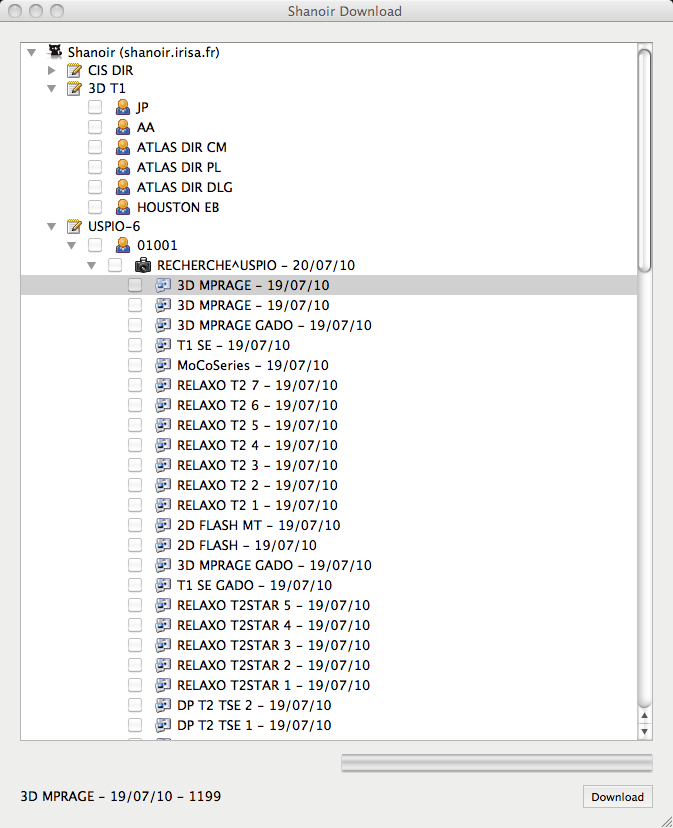

2001), and geometric surface representations of cerebral cortices were reconstructed from brain tissue maps derived from the segmentation of DTI data ( Liu et al. Axonal fibers were reconstructed via the streamlined tractography method ( Mori et al. These 2 separate groups of healthy adults were used for reproducibility study. In vivo DTI data were acquired in 2 separate groups ( n = 9 and n = 15) of healthy young adults at The University of Georgia (GE 3T Signa MRI system) under Institutional Review Board approval (The imaging parameters were provided in Supplementary Material). Materials and Methods DTI of Human Brains This work opens up a new angle for future exploration of the molecular and cellular underpinnings of cortical folding and the interactions among different cortical folding mechanisms.

These biomechanical data provide further support to our axonal pushing hypothesis. In addition, we measured the Young’s modulus (a measure of the stiffness of a material Chou and Pagano 1992) of convex and concave regions of the growing Drosophila thoracic ganglia by time-lapse atomic force microscopy (AFM) under the contact mode and found that the Young’s modulus in convex regions is approximately 10 times that in concave regions and rapidly increases during development. In particular, in addition to DTI and HARDI of primate brains, we performed time-lapse confocal microscopic imaging of actin filament (axon marker) dynamics of developing Drosophila “thoracic ganglia” (a central nervous system structure), and it was found that axon density correlated positively with the morphogenesis of convex shapes of the thoracic ganglia. We tested our hypothesis by applying macroscale neuroimaging and microscale bioimaging. Inspired by the finding that a majority of axonal fibers are connected to gyral regions, we posited that cortical folding is induced and/or regulated by “pushing” of wiring axons. 2002), multiple tractography approaches, and multiple cortical surface reconstruction methods. This finding was further replicated and validated via high–angular resolution diffusion imaging (HARDI Tuch et al. Results indicated that a majority of axons were connected to the gyri in human, chimpanzee, and macaque monkey cortices. Therefore, we quantitatively characterized the relationship between axonal connection patterns and gyral and sulcal patterns in order to elucidate the intrinsic relationships between axonal wiring and cortical folding. 2010), we are able to quantify the folding patterns and fiber connection properties within the same structural substrate of a local cortical surface patch. By applying a joint analysis that considers DTI-derived fiber connection patterns within a neuroanatomic context of cortical folds ( Li et al. 2007, 2008) to reconstruct geometric representations of these primate cortices from the DTI data.

#MEDINRIA VIDE SOFTWARE#
In this paper, we acquired in vivo DTI data in order to quantitatively map the axons connected to the cerebral cortices in humans, chimpanzees, and macaque monkeys and applied in-house software tools ( Liu et al. Thanks to recent technical developments, diffusion tensor imaging (DTI) is now able to quantitatively map axonal fiber connections ( Mori 2006), and DTI-derived fiber tracts are well correlated with axon densities ( Mori et al. In this paper, based on quantitative analysis of macroscale neuroimaging data and microscale microscopic bioimaging data, we present a novel axonal pushing theory of cortical folding. However, due to a lack of joint and quantitative mapping between axonal wiring patterns and gyral and sulcal formations, the underlying mechanisms guiding these processes remain unclear. Therefore, at the conceptual level, it is reasonable to postulate that there is a close relationship between cortical folding and axonal wiring. Among many factors ( Barron 1950 Rakic 1988 Welker 1990 Sur and Rubenstein 2005) that play important roles in complex cortical folding, the axonal wiring process is believed to be a critical determinant ( O’Leary 1989 Van Essen 1997). Neuroscience research has demonstrated that the neural structures of gyri and sulci emerge from complex cortical folding processes during development ( Rakic 1988). Cortical folding, diffusion tensor imaging, shape analysis Introduction


 0 kommentar(er)
0 kommentar(er)
